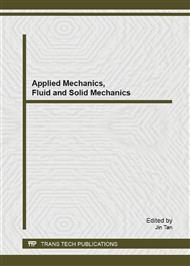[1]
A.S. Vereschaka. Performance of cutting tool with wear-resistant coating, M.; Engineering, 1993.P. 368.
Google Scholar
[2]
I.A. Iyutina, V.V. Kuprina, E.M. Sokolovskaya, I.A. Spasov. Research and application of rhenium alloys. Collection, M., (1975).
Google Scholar
[3]
A.A. Vereschaka and others. Russian Patent No. 2198243. Multilayer composite wear-resistant coating. 10. 02. 2003 with priority of 05. 08. (1998).
Google Scholar
[4]
G. Byrne, Advancing Cutting Technology. / G. Byrne, D. Dornfeld, B. Denkena. / CIRP Annals. Vol 52/2/(2003).
DOI: 10.1016/s0007-8506(07)60200-5
Google Scholar
[5]
Simultaneously Increasing the Ductility and Strength of Nanostructured Alloys /Yong-Hao Zhao, Xiao-Zhou Liao, Sheng Cheng, En Ma, and Yuntian T. Zhu. 2006 WILEY-VCH Verlag GmbH & Co. KGaA, Weinheim.P. 123-132.
Google Scholar
[6]
A.S. Vereshchaka, A.A. Vereschaka, A.K. Kirillov. Ecologically friendly dry machining by cutting tool from layered composition ceramic with nano-scale multilayered coatings. TTp, Trans Tech Publications.T. 1. GD. JMU. 2011. P. 68-76.
DOI: 10.4028/www.scientific.net/kem.496.67
Google Scholar
[7]
Konstantinos-DionysiosBouzakis, NikolaosMichailidis, GeorgiosSkordaris and others. Cutting with coated tools: Coating technologies, characterization methods and performance optimization. CIRP Annals - Manufacturing Technology 61 (2012) 703–723.
DOI: 10.1016/j.cirp.2012.05.006
Google Scholar
[8]
Vereschaka A.S., Grigoriev S. N., Sotova E.S., Vereschaka A.A. Improving the efficiency of the cutting tools made of mixed ceramics by applying modifying nano-scale multilayered coatings. Advanced Materials Research Vols. 712-715 (2013).
DOI: 10.4028/www.scientific.net/amr.712-715.391
Google Scholar
[9]
A.A. Vereschaka, A.S. Vereschaka, S.N. Grigoriev, D.V. Sladkov. Nano-Scale Multi-Layered Coatings for Cutting Tools Generated Using Assisted Filtered Cathodic-Vacuum-Arc Deposition (AFCVAD). Applied Mechanics and Materials Vols. 325-326 (2013).
DOI: 10.4028/www.scientific.net/amm.325-326.1454
Google Scholar
[10]
VereschakaAlexey . Development of assisted filteredcathodicvacuum arcdepositionof nano-dispersed multi-layeredcomposite coatingsoncutting tools. Key Engineering Materials Vol. 581 (2014) pp.62-67.
Google Scholar
[11]
A. M. Adaskin, A. A. Vereshchaka, and A. S. Vereshchaka. Study of Wear Mechanism of Hard_Alloy Tools during Machining of Refractory Alloys. Journal of Friction and Wear, 2013, Vol. 34, No. 3, p.208–213. Allerton Press, Inc., (2013).
DOI: 10.3103/s1068366613030021
Google Scholar
[12]
A.A. Vereschaka, A.S. Vereschaka, S.N. Grigoriev, A.K. Kirillov, O.U. Khaustova. Development and research of environmentally friendly dry technological machining system with compensationof physical function of cutting fluids. Procedia CIRP 7 (2013).
DOI: 10.1016/j.procir.2013.05.053
Google Scholar
[13]
A.A. Vereschaka, M.A. Volosova, S.N. Grigoriev, A.S. Vereschaka. Development of wear-resistant complex for high-speed steel tool when using process of combined cathodic vacuum arc deposition. ProcediaCIRP 9C (2013) Elsevier B.V. pp.8-12.
DOI: 10.1016/j.procir.2013.06.159
Google Scholar
[14]
A.A. Vereschaka. Improvement of working efficiency of cutting tools by modifying its surface properties by application of wear-resistant complexes. Advanced Materials Research Vols. 712-715 (2013) pp.347-351.
DOI: 10.4028/www.scientific.net/amr.712-715.347
Google Scholar


